Contents
Intro
When it comes to Eurasian red squirrels, we are not unfamiliar with them because most of the squirrels in cartoons are based on Eurasian red squirrels. Their big fluffy tails, beautiful fur colors, cute round faces, big almond eyes, jumping and walking and arboreal life have made the squirrels the royalty of many cartoons, and these cute cartoon images have accompanied us in our childhood for several generations.

Eurasian red squirrels have a variety of coat colors, with their bellies a uniform creamy white color that is clearly defined. The head, back, tail and limbs are black, brown, tan, orange, red and even blue-gray. It also changes its coat color after winter and summer dressing. In the winter, long ear tufts appear on the ears of Eurasian red squirrels, a characteristic unique to all squirrels.

Snowy Squirrel
The Eurasian Red Squirrel is the most widely distributed squirrel of the family Squirreliaceae, formerly known as the Gray Squirrel or Northern Squirrel, but in recent years the name Eurasian Red Squirrel has been used, which is more in keeping with the characteristics of the species and is consistent with the English name. The Eurasian red squirrel is widely distributed in northern Eurasia, with up to 40 subspecies recorded, but 16-23 are more widely recognized. Of the many subspecies of Eurasian red squirrels, the most beautiful are the Obi subspecies and the Britannia subspecies (known as the English red squirrel).

The difference between the blue-gray coat in winter and the orange-yellow coat in summer is remarkable, and the result of the comparison is almost like two rats, which makes it the subspecies of Eurasian red squirrels with the biggest difference between winter and summer attire. Due to the beautiful appearance and gentle character of the Obi subspecies, they have become the new favorites of pet lovers, but the profit motive has also put this beautiful animal into the situation of being seriously illegally captured.
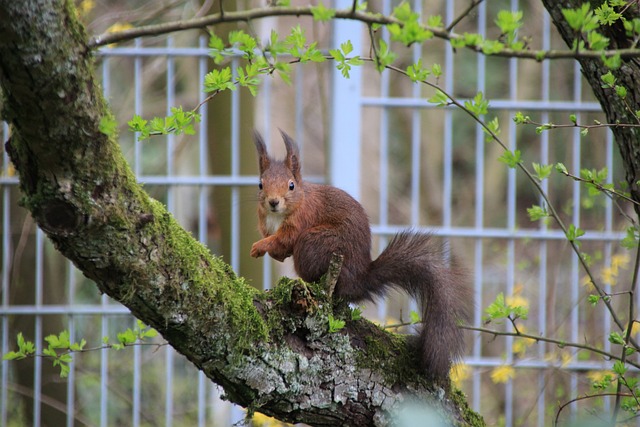
English Red Squirrel
The English red squirrel is the British subspecies of the Eurasian red squirrel, found in the British Isles in western Europe, and gets its name from its beautiful red fur. In fact, there is a clear tendency for the fur color to change from red to black from west to east (from Europe to Asia) in the Eurasian red squirrel’s range.
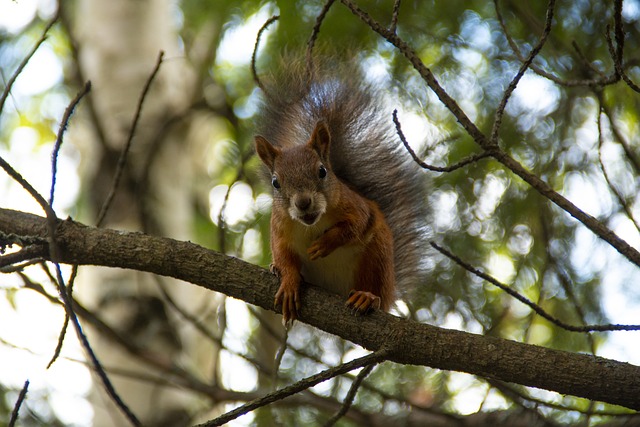
The English red squirrel is arguably the best known and most beautiful Eurasian red squirrel, and is therefore a favorite of the British. However, for nearly a hundred years, the English red squirrel has been out-competed by the gray squirrel. The reason for this is that in the 19th century, a plague killed many English red squirrels. To make up for the lack of red squirrels in the UK, gray squirrels were introduced to Lancashire from the United States in 1876, and over the next 50 years there were 33 recorded introductions of gray squirrels to the UK.

North American gray squirrels are large and adaptable, and have significantly higher litter sizes than British red squirrels. After the invasion of North American gray squirrels, their utilization of broadleaf tree seeds is significantly more efficient than that of English red squirrels, so they can accumulate more fat before winter and successfully exclude English red squirrels from broadleaf forests and mixed coniferous forests with their robust physique, so that they only live in a few coniferous forests.

Not only that, the gray squirrels will also enter the coniferous forests to steal the food stored by the English red squirrels, which makes it even more difficult for the English red squirrels to overwinter. To make matters worse, gray squirrels carry a squirrel herpes virus, which rarely kills gray squirrels but is fatal to red squirrels.
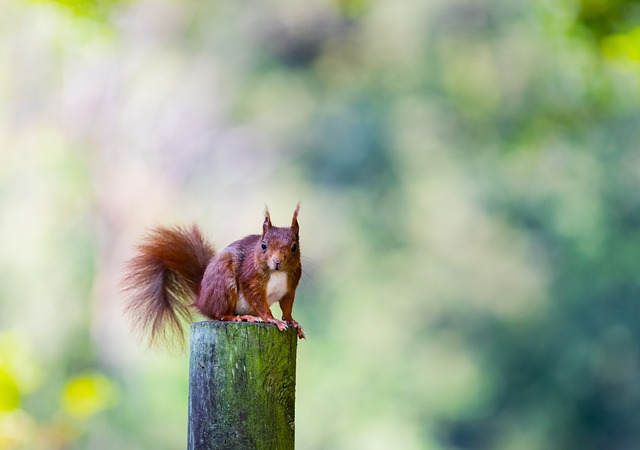
Over the course of 100 years, the gray squirrel population in the British Isles has grown from a few dozen to 2 million. The British red squirrel population, on the other hand, has declined from 1 million to 140,000, and 85% of the population has retreated to a number of areas in the north of England. So, for more than 100 years, the English red squirrel has been struggling to survive, and its population is struggling to recover.
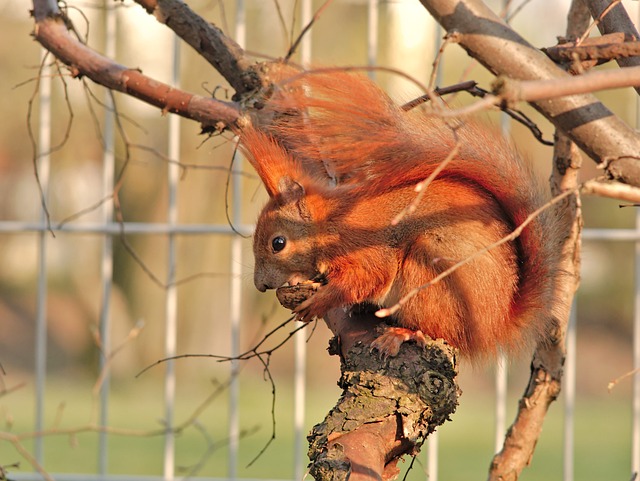
Bringing Squirrels Home
Eurasian red squirrels usually choose their nests in tall coniferous trees, often utilizing tree holes and nests, with each individual usually occupying 2-3 nests at the same time. Eurasian red squirrels can breed twice a year, with 5-7 squirrels per litter. The birth weight of the young is 10-15 grams, the gestation period is 38-39 days, and the nursing period is 60-70 days. During the breeding season, many animal lovers also come to the park to observe the breeding of Eurasian red squirrels, and to observe the mother squirrels regularly changing their nests, i.e. moving with their young.
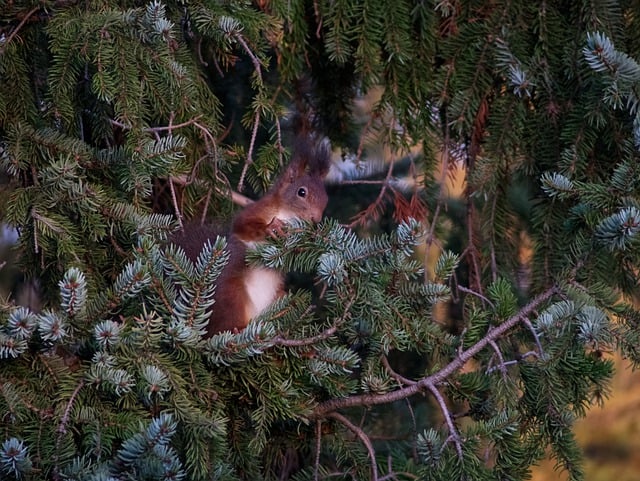
Beauty and intelligence at the same time
In cold winters, it can also happen that several squirrels share the same nest to maintain their body temperature. Eurasian red squirrels do not hibernate and are diurnal, spending 70-80% of their active time foraging for food. In winter, Eurasian red squirrels change into winter clothes and grow long ear nests on their ears, making them very eye-catching.

In the park, Eurasian red squirrels from mid-October began to grow ear tufts of hair, until the beginning of November, fully grown, to realize the “magnificent transformation”. In Heilongjiang Province, Liangshui National Nature Reserve research shows that each Eurasian red squirrel Northeast Asian species of nests for an average of 5-7, there is a clear phenomenon of changing nests, that is, the day out of the nest will not return to the same nest, and the frequency of winter day to change the nest is close to 100%. Therefore, the word “cunning rabbit” also applies to Eurasian red squirrels.
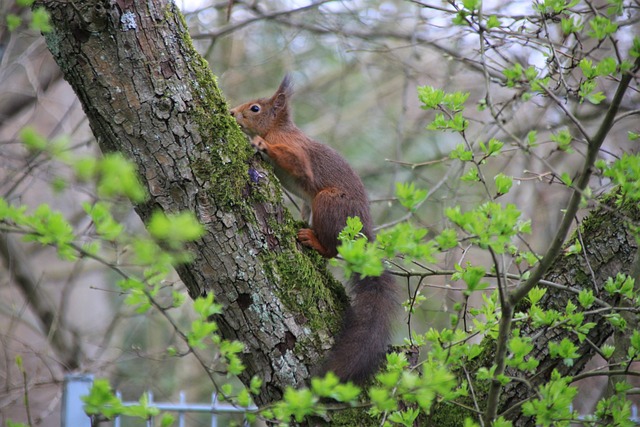
At this time of year, fall is coming to an end and winter is finally approaching. During the cold winter months, Eurasian red squirrels rely on food buried in the fall to survive. Eurasian red squirrels tend to scatter their food under fallen leaves and soil, and to a lesser extent, in trees.
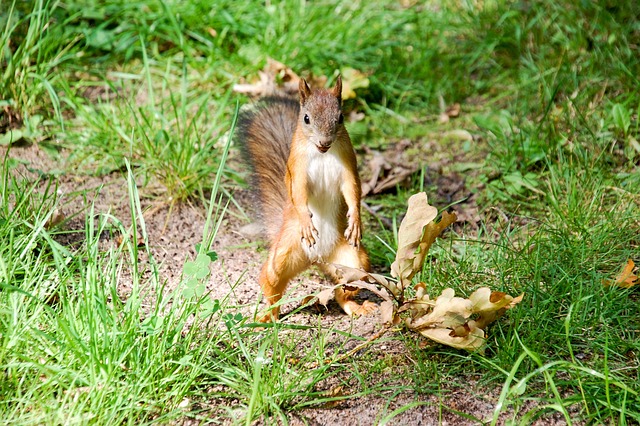
Dispersal allows plant seeds to be dispersed as widely as possible, and although only a small percentage of the stored seeds germinate and grow, this method does promote forest regeneration. The Eurasian red squirrel inadvertently plays a meaningful role, and it is this small but vital link that benefits the entire forest.